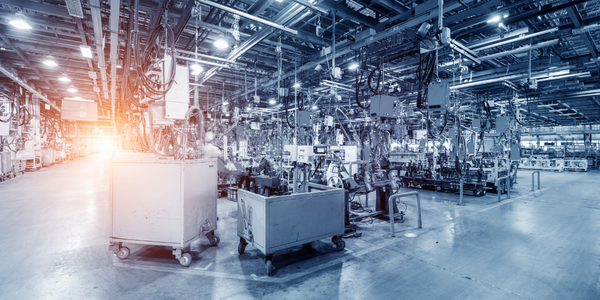Technology Category
- Analytics & Modeling - Predictive Analytics
- Sensors - Chemical Sensors
Applicable Industries
- Apparel
- Chemicals
Applicable Functions
- Procurement
- Quality Assurance
Use Cases
- Leasing Finance Automation
- Material Handling Automation
Services
- Testing & Certification
- Training
About The Customer
GC is the largest petrochemical company in Thailand and the third largest in Asia. The company is involved in the manufacturing and distribution of a wide range of petrochemical products, which serve as basic feedstock for downstream industries such as packaging, apparel, communications and electronic equipment, electrical appliances, vehicles, construction materials, engineering-based plastics, agricultural equipment, and more. With a constant focus on innovation and technology, GC is committed to improving the way people live through its products. The company is comprised of a large team of engineers who are responsible for 70% of the business operations.
The Challenge
GC, the largest petrochemical company in Thailand and third largest in Asia, was facing challenges in its operations due to a lack of data-driven decision making. The company, which is involved in the manufacturing and distribution of a wide range of petrochemical products, had 70% of its business focused on engineers and chemical plants. However, the engineers were relying on piecing together data from different suppliers, which carried complex variables. This was not only inefficient but also hindered the company's ability to innovate and optimize its operations. Furthermore, the company was following traditional practices such as changing chemical catalysts at known intervals, without any data-driven reasoning. This was leading to unnecessary costs and resource wastage.
The Solution
GC embarked on a digital transformation journey, focusing on three dimensions: business transformation, technology transformation, and people transformation. The company chose Alteryx for its ability to democratize data, automate manual processes, and provide quicker insights for improved decision making. Alteryx served as the catalyst for change at GC, particularly for its team of engineers. They used Alteryx to gather and analyze data, which led to the discovery that they could extend the life of their catalysts by up to 40%. This resulted in significant cost savings and resource optimization. Furthermore, GC leveraged Alteryx's predictive suite of tools to make better feedstock purchasing decisions. They used sales, production, pricing data, and plant conditions from disparate systems to create a user-friendly algorithm that provided deeper insights and allowed for advanced analytics reskilling and upskilling.
Operational Impact
Quantitative Benefit

Case Study missing?
Start adding your own!
Register with your work email and create a new case study profile for your business.
Related Case Studies.

Case Study
Fire Alarm System and Remote Monitoring Sytem
Fire alarm systems are essential in providing an early warning in the event of fire. They help to save lives and protect property whilst also fulfilling the needs of insurance companies and government departments.Fire alarm systems typically consist of several inter-linked components, such as smoke detectors, heat detector, carbon monoxide, manual call points, sounders, alarm and buzzer. The fire alarm system should give immediate information in order to prevent the fire spread and protect live and property.To get maximum protection a shoe manufacturer in Indonesia opted for a new fire alarm system to monitor 13 production sites spread over 160 hectars. Although the company had an existing fire alarm system, it could not be monitored remotely.It was essential that the new system would be able to be monitored from a central control room. It needed to be able to connect to the existing smoke detector and manual call point. Information should be easily collected and passed on to the Supervisory Control and Data Acquisition (SCADA) system. Furthermore, the system should have several features such as alarm management, auto reporting, being connected to many client computers without additional cost, and run 24/7 without fails. The company also needed a system which could be implemented without changing the architecture of the existing fire alarm system.

Case Study
IoT Applications and Upgrades in Textile Plant
At any given time, the textile company’s manufacturing facility has up to 2,000 textile carts in use. These carts are pushed from room to room, carrying materials or semi-finished products. Previously, a paper with a hand-written description was attached to each cart. This traditional method of processing made product tracking extremely difficult. Additionally, making sure that every cart of materials or semi-finished products went to its correct processing work station was also a problem. Therefore, the company desired an intelligent solution for tracking assets at their factories. They also wanted a solution that would help them collect process data so they could improve their manufacturing efficiency.

Case Study
Honeywell - Tata Chemicals Improves Data Accessibility with OneWireless
Tata was facing data accessibility challenges in the cement plant control room tapping signals from remote process control areas and other distant locations, including the gas scrubber. Tata needed a wireless solution to extend its control network securely to remote locations that would also provide seamless communication with existing control applications.

Case Study
Advanced Elastomer Systems Upgrades Production
In order to maintain its share of the international market for thermoplastic elastomers AES recently expanded its Florida plant by adding a new production line. While the existing lines were operating satisfactorily using a PROVOX distributed control system with traditional analog I/O, AES wanted advanced technology on the new line for greater economy, efficiency, and reliability. AES officials were anxious to get this line into production to meet incoming orders, but two hurricanes slowed construction.

Case Study
Retailer Uses RFID Scanner to Improve Efficiency
Patrizia Pepe wished to improve the logistics of their warehouse: accepting incoming goods from their production sites, movement of items throughout
the warehouse, and packaging of goods for distribution to the retail locations. They initially tried to use barcodes for this function. Because barcodes must be individually scanned within a line-of-sight, the acceptance of goods coming into the warehouse was too time consuming. Working with the University of Florence, Patrizia Pepe instituted a five-month pilot project beginning in August of 2009 to test the validity of an RFID solution. The pilot involved tagging of about 60,000 items for the second seasonal collection, and convinced the company to move forward with tagging all items.




